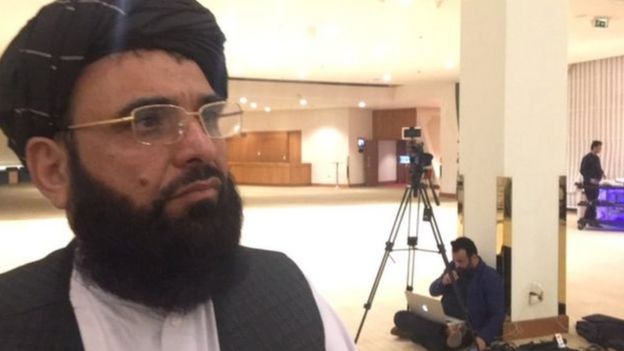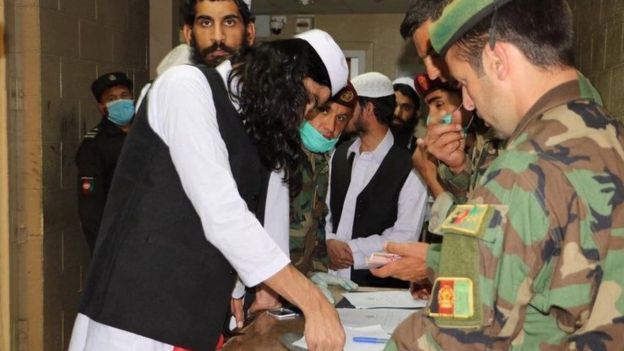 |
| The Afghan peace agreement is deadlocked due to the government's slowness and the Taliban's stubbornness |
The deadlock has arisen in the first phase of implementation of the Afghanistan Peace Accord. The Afghan government has called for a ceasefire during Ramadan, but the Afghan Taliban have rejected it.
While the Afghan government has been slow to release Taliban prisoners, the Afghan Taliban have refused to talk further.
Observers say that in the negotiations with the United States, the parties seem ready to implement the peace agreement and talk of 'manam', but when it comes to implementation, it cannot be implemented. The word 'Na Manam' means 'I do not believe'.
For peace, Afghan President Ashraf Ghani has called for a ceasefire around the world to address the dangers of the corona virus and the sanctity of Ramadan. Sohail Shaheen, a spokesman for the Afghan Taliban's political office, said they had signed a peace agreement that included a solution to all issues, including lasting peace and a ceasefire. Supported on the surface.

He said that at a time when the lives of thousands of prisoners were being endangered due to the corona virus, the implementation of the peace agreement was being hampered. In such a situation, it is unreasonable to call for a ceasefire.
The Afghan Taliban say that once a peace agreement has been reached and its implementation can lead to a ceasefire and peace, its implementation must be ensured. On the other hand, there are reports that the Afghan government is facing legal issues in releasing prisoners.
Now where are the obstacles and how are the confusions?
This is not the first time such stubbornness has been seen in Afghanistan, but it has been the case in the past when the Mujahideen were entangled with each other and issued a writ of 'Na Manam Na Manam'. Was
In the current situation, the Afghan Taliban want the release of 5,000 of their prisoners as a precondition for a peace deal, while about 1,000 Afghan government officials are in the custody of the Afghan Taliban. The two sides are due to release the prisoners in the first phase of the peace agreement and the deadlock is already in the first phase.
Sohail Shaheen, a spokesman for the Afghan Taliban's political office in Qatar, told the BBC that the Afghan government was obstructing the agreement. He said a framework for peace had been set up, which the United States called the Taliban agreement, and if implemented, it could bring peace to Afghanistan and improve the situation.
 JTN IMAGES
JTN IMAGES
It should be noted that the implementation of the agreement reached between the United States and the Taliban on February 29 in Qatar was to start from March 10, the first link of which is the release of prisoners. The Afghan government has so far released 430 detainees, while the Afghan Taliban have so far released 40 people who the Taliban say are Afghan government and army personnel.
Does the Afghan government want a barrier?
Sohail Shaheen, a spokesman for the Afghan Taliban's political office, said the Afghan government did not want the agreement to be implemented in Afghanistan because it would force the current rulers to relinquish power.
He said that in the first phase, prisoners would be released and then there would be inter-Afghan talks in which all Afghans would participate and then there would be talks at the international level to form a new government. And the current rulers will have to go home.
When did the deadlock happen?
A three-member Afghan Taliban team arrived in Kabul to secure the release of the 5,000 prisoners. The Afghan Taliban initially demanded the release of 15 detainees, saying they knew where their 5,000 prisoners were being held.
The Afghan government initially refused to release the 15 detainees, calling them key Taliban commanders. The Afghan government's position was that these 15 Taliban commanders were involved in major terrorist attacks in the country in which a large number of civilians were killed and could not be released.
 JTN IMAGES
JTN IMAGES
Afghan Taliban spokesman Sohail Shaheen said the 15 Taliban were not commanders and were not involved in major attacks. The release of these 15 Taliban has created a deadlock in the seemingly ongoing progress on the peace agreement between the United States and the Taliban.
The Afghan government is refusing to release them, while the Afghan Taliban say the 15 will work with a committee that will identify the prisoners they want released.
"The Afghan government is looking for excuses so that the peace agreement does not succeed and the Kabul administration will have to relinquish power as a result of this agreement," Shaheen said.
After the deadlock, the Afghan Taliban withdrew their technical team. The Afghan government has so far released more than 400 prisoners, but the Taliban say most of them are criminals, with only about 60 from their organization.
US officials met with Afghan Taliban leader Mullah Baradar and others in Qatar a few days ago to end the deadlock, and have since contacted Afghan officials in Kabul.
The US delegation also visited Pakistan a few days ago and there are reports that the US is working to implement the agreement. The Afghan Taliban released 40 Afghan detainees after meeting with US officials.
In the current context of global coronavirus epidemics, the implementation of this agreement seems difficult. However, the Afghan Taliban has demanded the immediate release of prisoners whose lives are at risk from the virus.



No comments:
Post a Comment